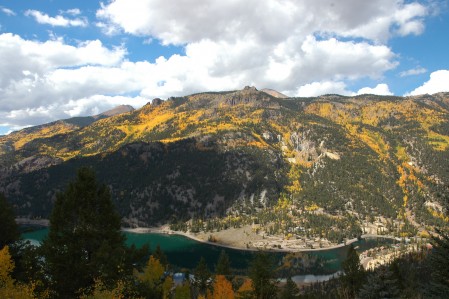The Ute and Ulay mines were some of the best known silver and lead producers in Colorado. Between 1874 and 1903, the mines were responsible for $12 million worth of minerals, which today would amount to more than $280 million in value. Located in Hinsdale County, the mines were largely responsible for the development of Lake City. The booming mining-based economy attracted thousands of people to the area and the mines continued to remain in production on and off through the 1980’s.
Thanks to LKA Gold, the ten-acre site has been donated to Hinsdale County and the environmental stabilization work completed with the assistance of the Environmental Protection Agency (EPA), Colorado Department of Public Health & the Environment (CDPHE), and the Bureau of Land Management (BLM). The site consits of 18 structures including residential cabins, a blacksmith shop, a boarding house a red-cedar water tank, and assayer’s office. Over the past twenty years, the structures have continued to degrade during adverse weather and many are unstable. Due to the unsafe nature of the site, the public is currently not allowed near the buildings. A Historic Structures Assessment will need to be completed to determine each structure’s needs in order to stabilize the buildings for future reuse.
The Ute and Ulay mines, mill complex and surrounding Henson town site are rare examples of a more complete mining coummunity with large amount of historic fabric remaining. The site’s location along the Alpine Loop Backcountry Scenic and Historic Byway increases its opprotunity for eduation and a heritage tourism desination.
Colorado Preservation, Inc. (CPI) was founded in 1984 to promote historic preservation by providing information, education, training, expertise, and advocacy to Colorado communities and individuals. DPI engages leaders with local governments and non-profit organizations and assists historic property owners, educators, and interest citizens to develop successful preservation projects and programs. CPI administers Colorado’s Most Endangered Places Program (EPP), present the annual Saving Places Conference, hosts the Dana Crawford & State Honor Awards recognizing excellence in historic preservation, and maintains an active presence in the state legislatrue. CPI also provides services in grant and preservation program management, and undertaikes projects that serve as models for pereservation statewide.
(Taken from Colorado’s Most Endangered Places Issue No. 18 2015)




